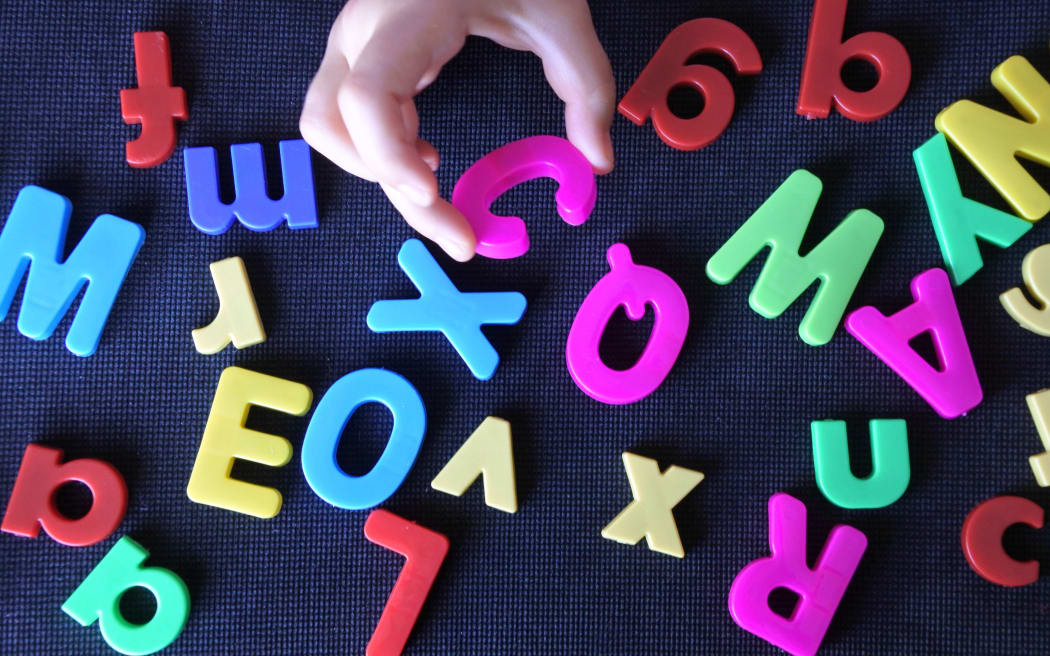
Photo: 123rf
Explainer - The government from 2025 is mandating how state schools teach children to read. But what is structured literacy and how does it compare to other teaching methods?
For decades, controversy over how to teach children to read has persisted. Across the English-speaking world, a shift is under way towards what's known as the science of reading and more specifically, a structured approach to literacy.
Last Thursday, Education Minister Erica Stanford announced that from next year, all state schools in Aotearoa New Zealand will teach reading "using the proven structured literacy approach".
The minister confirmed $67 million has been set aside as part of Budget 2024 for teachers' professional development, classroom resources, and support, administration and evaluation.
"Today's funding announcement ensures teachers will receive the training, support and resources they need to deliver this," Stanford said.
The announcement was in line with National's campaign promise to "ensure every child learns to read using structured literacy by making it a requirement at primary school".
But not everyone is happy. While there's a growing body of research supporting a structured approach, some have an issue with the government's mandating of it.
What's the problem?
The 2022 Programme for International Student Assessment (PISA) results found 21 percent of New Zealand 15-year-olds were reading at the lowest level - meaning they struggled with all but the simplest reading tasks measured by the test.
New Zealand wasn't alone, with a similar proportion of low achievers in Australia and the United States.
Also in 2022, not-for-profit The Education Hub published two research reports on the state of literacy among young people in New Zealand.
The reports said the performance of both primary and secondary school students had been declining in "most reliable measures of reading achievement", especially since 2009.
Persistently large gaps remained between students from different socio-economic backgrounds and ethnic groups. Since 2000, data showed declines in reading for Māori and Pasifika students.
This wasn't just an educational issue, founder Dr Nina Hood wrote: "Being literate is also connected with greater employment opportunities and higher pay, better health and wellbeing, and significantly lower incarceration rates."
US education journalist Emily Hanford has spent years investigating the issue and argued teaching methods based on bad science were in large part to blame.
"There are lots of kids who aren't getting what they need in school when it comes to being taught how their written language works," she told RNZ last year. "Most people actually need much more and better instruction than they're getting in many American schools, as I understand it, in many schools in New Zealand as well."

Many children in both US and New Zealand schools aren't getting what they need from current teaching methods for language, a specialist journalist says. Photo: 123RF
What is structured literacy?
First, let's talk about what it's not. It's not what's known as a balanced or whole language approach.
Popularised in the late 20th century, the whole language approach assumed children would naturally learn to read if they had access to books. Its goal wasn't necessarily accurate word recognition, but comprehension. Children were encouraged to use contextual information - other letters, words, and even pictures - to help identify words.
This was the foundation of Reading Recovery, developed by New Zealand educationalist Dame Marie Clay in the late 1970s. The intervention programme was implemented in New Zealand in the 1980s and became widely used internationally.
While initial studies found Reading Recovery had a positive impact on students' early reading achievement, more recent research into how students were faring two and three years later suggested those put through the programme had test scores below those of children who hadn't gone through it.
The programme has since been refreshed but following Stanford's announcement, will no longer be funded from 2025.
"The whole language approach to teaching reading, where students would look at a picture and guess a word based on the picture and perhaps the first letter of the word, left far too much to chance, and too many children slipped through the cracks," said Dr Melissa Derby, a senior lecturer at Waikato University's Te Kura Toi Tangata School of Education Operations.
In contrast, a structured approach was based on what scientists have discovered about how we learn to read: that unlike spoken language, literacy normally depends on explicit instruction.
The term structured literacy has been trademarked by the International Dyslexia Association. The IDA defines structured literacy as the "highly explicit, systematic teaching of foundation skills such as decoding and spelling skills, as well as explicit teaching of other important components of literacy such as vocabulary, comprehension, and writing".
Ministry of Education curriculum documents state a "structured approach" to teaching refers to both the content and the methods of teaching.
Canterbury University's Better Start Literacy Approach, reportedly used in more than 40 percent of New Zealand schools already, differs from the IDA's. Professor Gail Gillon, co-developer of BSLA, described it as "a structured literacy approach" that's been developed "specifically for our New Zealand education context".
The ministry, which has backed BSLA since 2020, prefers to use the term "structured approach to literacy", to get around this issue.
The benefit of a consistent, "single-term structured literacy approach", the Dyslexia Evidence Based website states, is that "it allows us to use the same terminology when we advocate for change for dyslexic students".
"This term was created to support dyslexic students and any other students who struggled to learn to read. It is important we don't lose sight of this when we are reading new research."
Lifting Literacy Aotearoa and Dyslexia Evidence Based are proponents of the IDA framework in New Zealand.
DEB founder Sharon Scurr told RNZ the word "framework" is crucial. "If you're trained in the framework, then you're trained in teaching tier three children."
(In the tiered support model, tier one refers to mainstream children who don't need much help, tier two often need support alongside piers, while tier three require one-on-one intervention.)
"And if you know how to teach tier three children, then you know how to teach all children."
What it looks like
Teachers and researchers repeatedly told RNZ a structured approach isn't a programme, it's a pedagogy.
Deputy principal and special education needs coordinator at Tawa School, Dr Olwyn Johnston, has been using a structured approach - based on Phonics International - and tracking students' progress since 2021.
"We started slowly, by introducing teachers to the science of learning."
She acknowledged "it isn't a magic wand", but as well as improved literacy the school has experienced fewer behavioural problems.
"We talk about shrinking the tail of underachievement. And [at Tawa] we haven't just shrunk the tail, we've docked it," she said. "I couldn't believe our test scores. Yes, some are still struggling. But instead of sitting below the national average, as we were, our tail is now above that. Our whole standard deviation has shifted, incredibly. It's exciting."
She was supportive of the government's mandate but worried about consistency, describing the current approach as "hodge podge".
"We've got to get the right providers to help upskill teachers. And we've got to stop treating this subject as a political football. Our kids are too precious."
A shifting tide
For years the ministry has been making changes promoting the use of "structured resources" for young students.
A recent review suggested it was "making a positive difference to many ākonga [students] and improving their foundational literacy skills". However, "there remains a need to develop a consistent set of assessments to track progress [...] and to address the intellectual property restrictions to support further systems-wide capacity building".
About 85 percent of all primary schools, and at least half of all junior primary teachers, already use structured approaches to literacy in their teaching, according to the ministry.
But RNZ spoke with teachers and researchers who were sceptical of that figure, saying some teachers were likely just adding elements of structured literacy to existing whole language lessons.

Many teachers already use structured approaches to literacy in their teaching, the Ministry of Education says. Photo: 123RF
Criticism
The union for primary teachers, NZEI Te Riu Roa criticised the government's move, saying "it's risky for politicians to be mandating a single approach to the art of teaching".
President Mark Potter said while structured literacy had its uses "it is not a silver bullet for teaching children to read". "Teaching is an art and a craft, not just a science. A teacher knows what teaching approach will work best for the variety of learners in their classroom. Mandating a one-size-fits-all to curriculum does not work."
RNZ spoke with union members who felt the statement didn't reflect their views and politicised the issue.
In response, an NZEI spokesperson told RNZ: "Politicians should stay out of the classroom when it comes to pedagogy and leave the teaching profession to use their expertise and best evidence to tailor their teaching to meet the individual needs of the children in front of them."
It's true children need a range of opportunities, a literary facilitator with Tātai Angitu, at Massey University, Dr Christine Braid said "but there really is one way to learn to read a word".
"We learn to read by matching sounds to letters, first in short, dependable words like 'mop', and 'crash', and later in words like 'train', 'crane', and 'explain' and 'explanation'."
From there, we build a "mental dictionary" of words. "We do not learn through a whole-word method, even though eventually we can very quickly process whole words."
A structured approach was not necessarily "one programmed delivered in exact doses, at exact times, to all children" - the lessons could be sped up or slowed down, depending on the students, she added.
"We have a massive opportunity to get this right for this generation."
What's next?
From 6 May to 30 May, schools can apply for professional learning and development funding from the ministry.
Alice Wilson from Lifting Literacy Aotearoa, a group that advocated for structured literacy education, told Morning Report the government's announcement would require "probably the biggest workforce upskilling we've seen in New Zealand".
"We're talking about the whole teaching body."
Further details on the timing and allocation of funds, along with guidance on selecting resources, will be provided shortly, according to the ministry.


